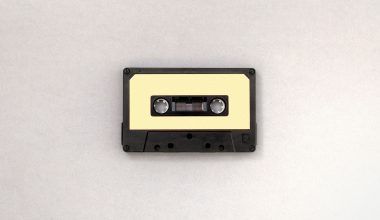The Billboard Album Chart is like the scoreboard of the music world. It shows which albums are the most popular each week, based on how many people are buying, downloading, and streaming them. Think of it as a big race where every album tries to reach the top spot!
This chart has been around for decades and is one of the most trusted ways to measure how well an album is doing. Artists dream of topping this chart because it means their music is loved by many people.
A Walk Down Memory Lane: The History of the Billboard Album Chart
The Billboard Album Chart wasn’t always as fancy as it is today. When it first started in 1945, it was pretty simple. It just counted how many albums were sold in stores. That’s it! But as time went on, the music industry changed, and so did the chart.
Here are some big moments in the chart’s history:
- 1945: The chart was created to track album sales.
- 1956: It became a weekly chart, updated every single week.
- 1991: Billboard started using something called SoundScan. This technology tracked exact sales, making the chart more accurate.
- 2014: The chart started including online streaming numbers, like plays on Spotify and Apple Music.
Why Does the Billboard Album Chart Matter?
Imagine a scoreboard at a cricket match. It tells you who’s winning and how close the game is. That’s what the Billboard Album Chart does for music. It shows us which albums people love the most.
Why It’s a Big Deal for Artists:
- It’s a Badge of Honor: Being on the chart means your music is popular. It’s like winning a medal.
- More Fans: A top spot can help an artist gain more fans around the world.
- More Money: Albums that chart well often sell more copies and get more streams.
How Does the Billboard Album Chart Work?
The Billboard Album Chart isn’t just about counting how many albums were sold anymore. Now, it includes many things like:
- Album Sales: The number of physical and digital albums sold.
- Track Sales: If someone buys a single song from the album, it counts too.
- Streams: Songs played on platforms like Spotify, YouTube, and Apple Music also add up. For example, 1,250 premium streams = 1 album sale.
This system makes sure the chart reflects how people consume music today.
Some Legendary Albums That Made History
Let’s talk about a few albums that ruled the Billboard Album Chart and became unforgettable:
- Michael Jackson’s Thriller: Released in 1982, this album was a record-breaker. Even today, it’s one of the best-selling albums ever.
- Adele’s 21: This soulful album from 2011 stayed on the charts for years, proving that heartfelt music never goes out of style.
- Taylor Swift’s Folklore: In 2020, Taylor Swift showed how a surprise album can dominate charts and hearts.
How Streaming Changed the Billboard Album Chart
Once upon a time, you had to buy an album to support your favorite artist. But now, you can stream it! This has changed how the chart works.
Why Streaming is Important:
- Easy Access: You can listen to music anytime, anywhere.
- Global Reach: Fans from all over the world can stream music the moment it’s released.
- Old Favorites Come Back: Even older albums can chart again if people start streaming them a lot.
For example, when Whitney Houston’s “I Will Always Love You” went viral on TikTok, her album saw a spike in streams and climbed the charts again!
Fans: The Real Heroes Behind the Chart
The Billboard Album Chart wouldn’t exist without fans. Fans play a huge role in making an album successful. Here’s how they do it:
- Streaming Marathons: Fans play an album on repeat to boost its numbers.
- Social Media Campaigns: They use hashtags and challenges to spread the word.
- Buying Multiple Copies: Hardcore fans even buy albums in different formats—CDs, vinyl, and digital downloads.
Fun Facts About the Billboard Album Chart
Did you know?
- The Beatles hold the record for the most number-one albums on the chart.
- Soundtracks like The Bodyguard and Frozen have topped the chart multiple times.
- Adele’s 21 was the first album to sell over 3 million copies in a week.
Controversies Around the Billboard Album Chart
Not everything about the chart is smooth sailing. There have been some controversies over the years:
- Album Bundles: Artists sometimes bundle albums with merchandise to boost sales, which some say is unfair.
- Streaming Manipulation: Some people accuse artists of using bots to increase streaming numbers.
Despite these hiccups, the Billboard Album Chart remains a trusted source for ranking music.
The Future of the Billboard Album Chart
As the music industry keeps changing, so will the Billboard Album Chart. In the future, we might see:
- AI Technology: Using artificial intelligence to make the chart even more accurate.
- Blockchain Tracking: Ensuring no fake sales or streams slip through.
One thing is clear: The chart will continue to adapt to new ways of listening to music.
How to Help Your Favorite Artist Chart
Want to support your favorite artist? Here’s what you can do:
- Stream Their Music: Play their album on platforms like Spotify and YouTube.
- Share on Social Media: Post about their music and use trending hashtags.
- Buy Their Album: Physical or digital, every purchase counts!
Why the Billboard Album Chart is Here to Stay
The Billboard Album Chart has been around for over 75 years, and it’s not going anywhere. It continues to evolve, reflecting how we listen to music. Whether you’re a fan, an artist, or just someone who loves good tunes, this chart is a celebration of music for everyone.
Final Thoughts
The Billboard Album Chart is more than numbers. It’s a way to see which music is making a difference in people’s lives. It tells us what’s trending, which artists are thriving, and what fans love. Whether you’re listening to an old classic or a new release, every stream and purchase contributes to the story the chart tells.
So, the next time you hear about the remember—it’s not just about the music. It’s about the love, passion, and connection between artists and fans.
Related Articles:
For further reading, explore these related articles:
- Best Songs of 2023 – Top Hits That Ruled Our Hearts
- Exploring Cool Album Covers: Art That Makes Music Even Better
For additional resources on music marketing and distribution, visit Deliver My Tune.






